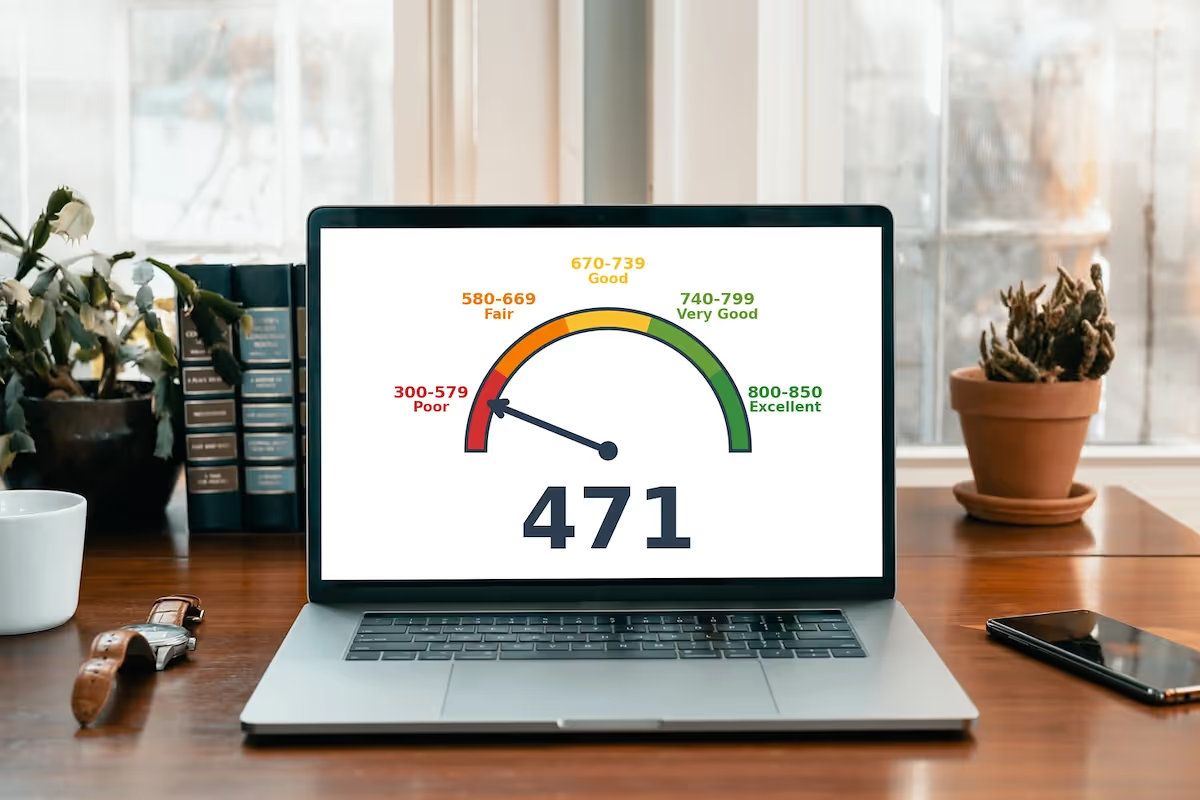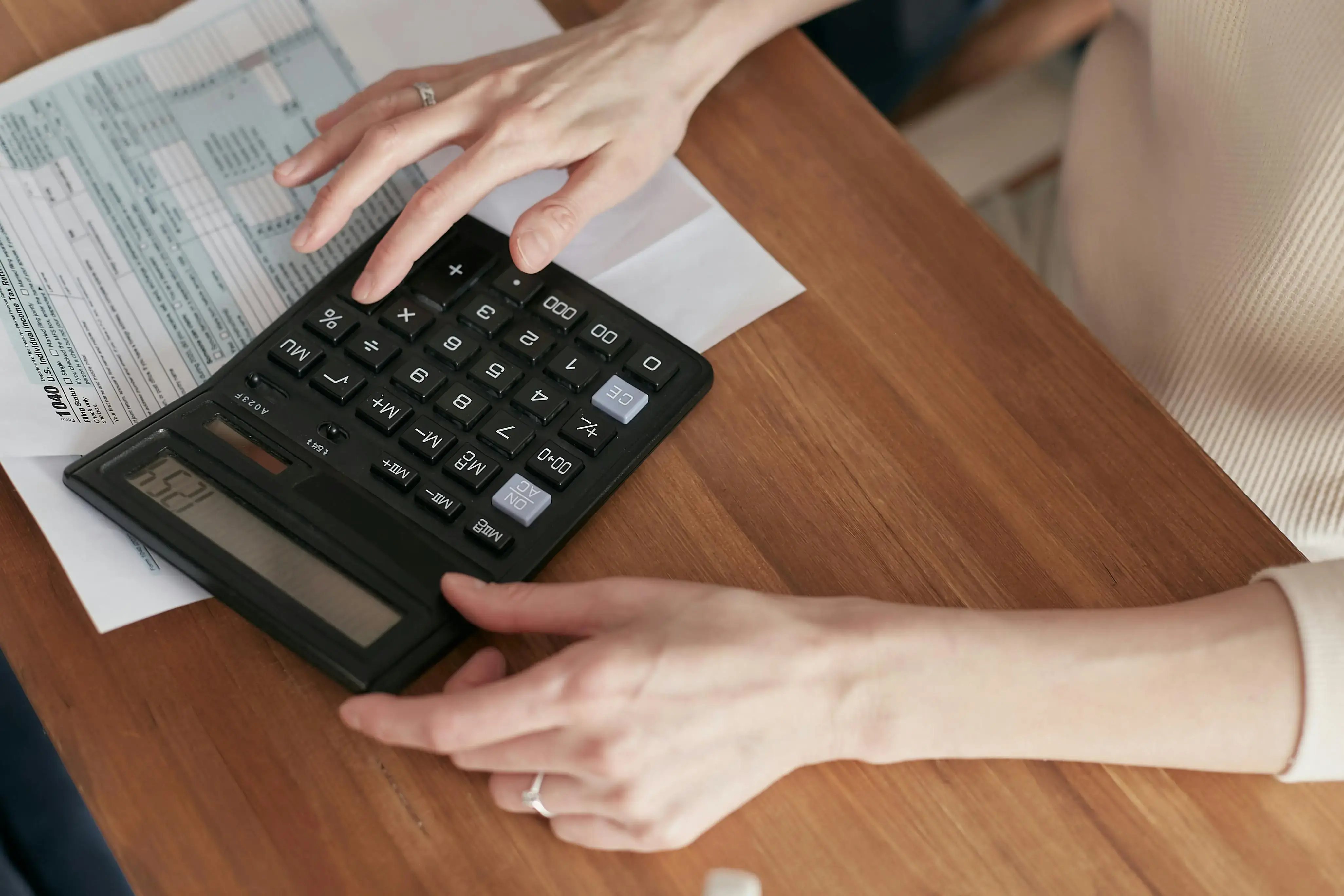
Kudos has partnered with CardRatings and Red Ventures for our coverage of credit card products. Kudos, CardRatings, and Red Ventures may receive a commission from card issuers. Kudos may receive commission from card issuers. Some of the card offers that appear on Kudos are from advertisers and may impact how and where card products appear on the site. Kudos tries to include as many card companies and offers as we are aware of, including offers from issuers that don't pay us, but we may not cover all card companies or all available card offers. You don't have to use our links, but we're grateful when you do!
471 Credit score: What You Need to Know in 2025
July 1, 2025


TL;DR
A 471 credit score is a starting point for improvement, falling into the 'Poor' range on the FICO scoring model. Understanding this position is the crucial first step toward building a stronger credit history and achieving your financial goals.
What Does a 471 Credit Score Mean?
A credit score of 471 falls into the "poor" range of the FICO Score model, which spans from 300 to 850. Lenders generally see scores in this bracket as high-risk, making it difficult to qualify for new loans or credit cards. If you are approved, you'll likely face unfavorable terms, such as significantly higher interest rates. This can make borrowing more expensive and limit your financial flexibility.
While a 471 score presents immediate hurdles, it's not a permanent financial sentence. Think of it as a starting point—a clear signal of your current credit standing. Understanding the factors behind this score is the first step toward rebuilding your credit profile. Improving your score is an achievable goal that can unlock better financial opportunities down the road.
Who Has a 471 Credit Score?
While age isn't a direct factor in credit score calculations, there is a clear trend of scores improving over time. According to 2023 data from Experian, the average FICO score increases with each generation:
- Generation Z (ages 18-26): 680
- Millennials (ages 27-42): 690
- Generation X (ages 43-58): 709
- Baby Boomers (ages 59-77): 745
- Silent Generation (ages 78+): 760
Credit Cards With a 471 Credit Score
A credit score of 471 falls into the "poor" credit range, which can significantly hinder your ability to qualify for most traditional credit cards. Lenders view this score as an indicator of high risk, meaning you're likely to face rejections from major card issuers for their more desirable unsecured cards. Your options will probably be limited to products specifically designed for building credit, such as secured credit cards or unsecured cards with high annual fees and interest rates.
Kudos’ Explore Tool helps you find the right credit card by asking about your preferences and needs to provide personalized recommendations from its database of nearly 3,000 cards. This process helps match you with options suited to your specific financial situation, as the tool is designed to accommodate users with varying credit profiles.
Auto Loans and a 471 Credit Score
A 471 credit score places you in the deep subprime category, which can make securing an auto loan challenging. While approval is still possible, you should anticipate facing significantly higher interest rates and less favorable loan terms compared to borrowers with better credit.
Based on a 2025 rate analysis, here is a breakdown of average interest rates by credit score:
- Super-prime (781-850): 5.25% for new cars and 7.13% for used cars
- Prime (661-780): 6.87% for new cars and 9.36% for used cars
- Non-prime (601-660): 9.83% for new cars and 13.92% for used cars
- Subprime (501-600): 13.18% for new cars and 18.86% for used cars
- Deep subprime (300-500): 15.77% for new cars and 21.55% for used cars
Mortgages at a 471 Credit Score
With a 471 credit score, your mortgage options are very limited. Your primary path is likely an FHA loan, which requires a down payment of at least 10% for scores under 580. Some subprime lenders may offer non-prime mortgages, but with much stricter requirements. According to mortgage requirements, conventional loans are generally not an option, as they typically require a score of 620 or higher.
If you do qualify, your 471 score leads to unfavorable terms. Expect significantly higher interest rates, as lenders view your score as high-risk. You will also face steeper fees and a larger down payment requirement. These factors make the overall cost of borrowing substantially more expensive over the life of the loan.
What's in a Credit Score?
Figuring out what goes into your credit score can feel like trying to solve a complex puzzle, but it generally boils down to a handful of key elements. The most common factors include:
- Your payment history, which tracks whether you pay your bills on time, is the most significant factor.
- Credit utilization, or the amount of credit you're using compared to your total available credit, also plays a major role.
- The length of your credit history demonstrates your experience with managing credit over time.
- Having a healthy mix of different types of credit, such as credit cards and installment loans, can positively impact your score.
- Finally, recent credit inquiries, which occur when you apply for new credit, are also taken into account.
How to Improve Your 471 Credit Score
Your credit score plays a crucial role in your financial life, and even with a score of 471, it is entirely possible to improve your creditworthiness. With consistent positive behavior, you can see meaningful changes and build a healthier credit profile.
- Monitor your credit reports. A low score can sometimes be the result of errors on your report, so it's vital to check for and dispute any inaccuracies you find. Regularly monitoring your reports also helps you track your progress and detect potential identity theft early on.
- Establish automatic bill payments. Payment history is the most significant factor in your FICO® score, so setting up automatic payments is a critical step to ensure you never miss a due date. Building a track record of on-time payments is fundamental to recovering from a poor credit score.
- Apply for a secured credit card. For those with damaged credit, a secured card is an accessible tool for rebuilding your score since it requires a security deposit that acts as your credit limit. These cards report your payment activity to the credit bureaus, allowing you to establish a positive history.
- Reduce your credit utilization ratio. This ratio, which is the amount of credit you're using compared to your total available credit, is the second most important factor in your score. Keeping your balances well below the recommended 30% of your limit demonstrates responsible credit management to lenders.
The free, AI-powered Kudos browser extension can help you manage your cards and monitor your score as you work to improve it.
Unlock your extra benefits when you become a Kudos member

Turn your online shopping into even more rewards

Join over 400,000 members simplifying their finances

Editorial Disclosure: Opinions expressed here are those of Kudos alone, not those of any bank, credit card issuer, hotel, airline, or other entity. This content has not been reviewed, approved or otherwise endorsed by any of the entities included within the post.



































.webp)
.webp)






.webp)